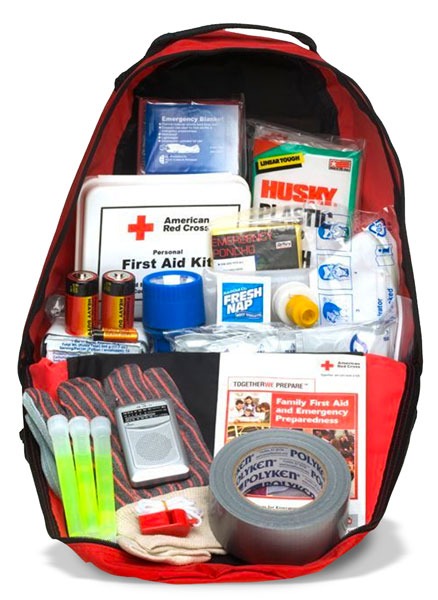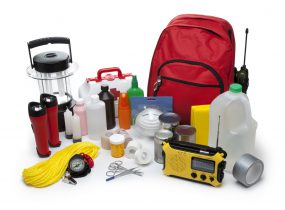Just How to Establish a Detailed Emergency Preparedness Strategy
In the world of preparedness, developing a detailed emergency situation strategy is not merely a task to mark off a list; it is a necessary cornerstone of any company or person's strength strategy. From natural catastrophes to unforeseen situations, the ability to anticipate, reduce, and react properly can mean the difference between mayhem and control. By carefully crafting a strategy that attends to numerous elements of emergency situation monitoring, consisting of threat assessment, interaction protocols, resource appropriation, and tactical decision-making, one can lay a strong foundation for guarding procedures, lives, and assets. Nonetheless, real efficiency of such a strategy lies not only in its creation but additionally in its recurring upkeep and adaptation to developing threats and challenges.
Importance of Emergency Situation Preparedness
Emergency situation readiness is essential for minimizing potential dangers and ensuring the security of neighborhoods and people. In today's globe, where natural catastrophes, public wellness situations, and other emergencies can strike without caution, being prepared can make a significant difference in lessening the influence of these occasions. By having a well-thought-out emergency readiness strategy in location, people and organizations can react properly, safeguard lives, and minimize home damage.
One of the main reasons emergency situation readiness is crucial is its role in saving lives. When emergencies happen, having a strategy that lays out clear treatments for discharge, interaction, and emergency situation action can assist people act quickly and decisively. This can protect against injuries and fatalities by making sure that individuals understand what actions to require to stay risk-free
In addition, emergency preparedness improves the strength of communities. By promoting a society of preparedness and planning for different situations, areas can get better much more swiftly from disturbances and calamities. This resilience is important for preserving security, connection of procedures, and total well-being in the face of hardship.
Assessing Prospective Dangers
Taking into consideration the importance of being prepared for unanticipated occasions, the first action in creating a reliable emergency situation readiness strategy entails completely reviewing and assessing possible dangers. This assessment requires a detailed evaluation of all possible risks that might impact the organization, considering elements such as location, industry, and historic information on occurrences. By determining these risks, organizations can prioritize their readiness initiatives and assign resources efficiently to minimize one of the most considerable risks.
Common risks that companies might deal with include all-natural catastrophes like floodings, typhoons, or quakes, technical dangers such as power failures or information breaches, along with human-caused dangers like accidents or willful acts of physical violence. Conducting a danger assessment likewise entails taking into consideration the potential influence of these events on the company's operations, staff members, clients, and reputation. By performing a complete danger analysis, organizations can create tailored emergency situation response plans that resolve their particular susceptabilities and guarantee reliable preparedness for any type of potential crisis.
Developing a Communication Plan
Creating a clear and extensive communication plan is crucial for effective emergency situation readiness within organizations. In times of dilemma, interaction plays a critical function in making certain the safety and well-being of workers, stakeholders, and the area. A well-thought-out communication plan must outline clear lines of communication, assign crucial employees in charge of communication tasks, and establish procedures for sharing details rapidly and properly.
One trick element of developing an interaction strategy is recognizing alternating and main interaction channels (EMERGENCY PREPAREDNESS). These can consist of email, text messaging, phone trees, social media sites systems, and public address systems. It is essential to make certain that these networks are reliable, available, and consistently examined to assure their performance throughout emergency situations

Structure an Emergency Set
Offered the vital importance of preparedness in times of dilemma, a key component that organizations need to attend to is the facility of an emergency situation package. An emergency kit works as a crucial resource that can help reduce the effect of unforeseen occasions, making certain that important materials and tools are easily offered when required most. When constructing an emergency kit, it is important to think about the particular needs and conditions of the company. Fundamental things such as water, non-perishable food, emergency treatment products, flashlights, batteries, and a battery-powered radio are essential components of any kind of emergency situation set. Furthermore, organizations should include vital records, such as call listings, insurance coverage info, and emergency feedback strategies, in water resistant containers within the kit. Frequently evaluating and updating the materials of the emergency kit is essential to ensure that products are useful and existing. By proactively preserving an emergency and constructing kit, companies can improve their preparedness to successfully react to dilemmas and safeguard their employees and assets.
Establishing Emptying Treatments
To make certain the safety and orderly emptying of employees throughout emergencies, organizations should develop clear and reliable discharge procedures. Evacuation procedures ought to include an reference array of possible circumstances, consisting of fires, all-natural calamities, or other emergencies that require swift evacuation.

In addition, companies should establish a system for audit for all personnel during an emptying to make certain that everyone has securely exited the facilities. Interaction plays a vital role in emptying treatments, with clear guidelines on how to evacuate and when to do so. Routine evaluation and upgrading of discharge treatments based upon responses and changing circumstances are vital to keeping the performance of the strategy.
Verdict
Finally, developing an extensive emergency preparedness plan is important for making sure the safety and security and health of people in the occasion of a catastrophe (EMERGENCY PREPAREDNESS). By examining possible risks, producing a communication plan, building an emergency package, and developing discharge people, treatments and organizations can be better furnished to respond properly to emergency situations. It is very important to prioritize readiness initiatives to minimize the effect of catastrophes and safeguard lives and residential property
In the realm of preparedness, creating a detailed emergency plan is not just a task to check off a checklist; it is a necessary foundation of any company or individual's strength method. When emergencies happen, having a plan that outlines clear treatments for emergency situation, evacuation, and interaction feedback can assist individuals act quickly and emphatically. read this. By carrying out a detailed risk assessment, organizations can develop tailored emergency reaction plans that address their certain susceptabilities and make certain effective readiness for any kind of possible situation
Creating a clear and detailed interaction strategy is necessary for efficient emergency preparedness within organizations. By assessing potential threats, developing an interaction plan, developing an emergency kit, and developing discharge organizations, procedures and people can be much better geared up to respond efficiently to emergencies.